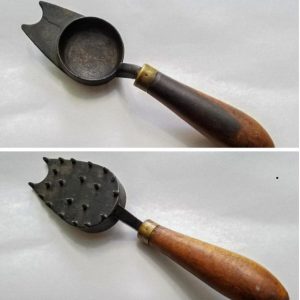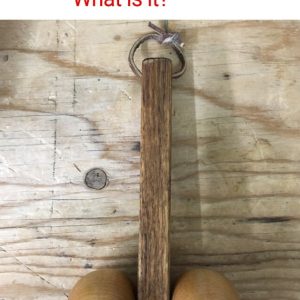Let’s be real—unless you’ve spent some serious time in a workshop or grew up swinging a hammer before cordless drills were cool, you probably don’t know what a cold chisel is. And hey, that’s okay. Most people today are all about the tech and touchscreens. But if you’re one of those folks with a few battle scars and a tool chest full of memories, you know exactly what this little beast is—and why it still matters.
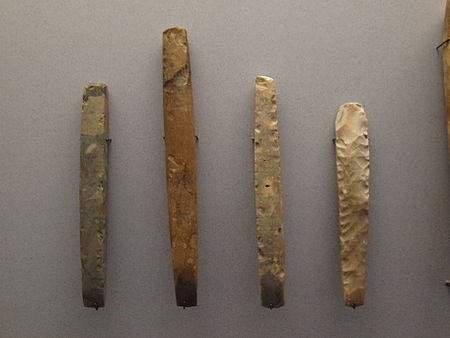
What Is a Cold Chisel (and Why Is It Still Relevant)?
No, it’s not used for ice. And no, “cold” doesn’t mean frozen. A cold chisel is a hand tool made of hardened steel, designed to cut through cold metal—that is, metal that hasn’t been heated. It’s a simple-looking bar with a beveled cutting edge on one end and a flat striking head on the other.
Think of it as the original wrecking crew. Before angle grinders and laser cutters, this tool helped cut through metal, concrete, and stone with nothing but muscle and precision.
Video: vintage chisel restoration… newly turned elm handle. blade cleaned and protected with Boeshield T9
From Blacksmiths to DIYers: A Cold Chisel’s Legacy
This tool has been around for centuries—seriously. Back in the days of forges and anvils, blacksmiths used chisels to shape weapons, armor, and farming tools. It’s a relic that never got old. Why? Because it works.
As industry evolved, so did the cold chisel. It became a staple for machinists, mechanics, metalworkers, and weekend warriors. No matter how advanced tools get, sometimes you just need that old-school, no-battery-required kind of reliability.
Breaking Down the Cold Chisel: Parts and Purpose
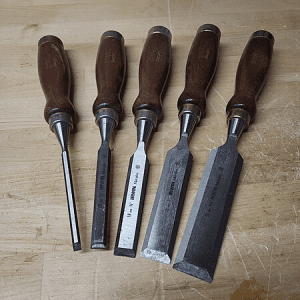
Every part of a cold chisel is built for business:
- The Blade: This is the sharp, angled tip you drive into the material. It’s what slices, scores, or breaks.
- The Shank: This is the tough steel body that absorbs the hammer’s energy.
- The Striking Head: Opposite the blade, this end takes the hits. It’s flat, solid, and built to handle repeated whacks from a hammer without falling apart.
It’s not flashy. It’s functional. And that’s exactly why pros love it.
How to Use a Cold Chisel Like a Pro
Using a cold chisel isn’t about brute strength—it’s about technique. Here’s how to make it work like it’s supposed to:
- Secure Your Material: Use a vise or clamp to hold your metal, stone, or bolt steady.
- Mark Your Line: Use a sharpie or scribe to draw your cut or break line.
- Set the Chisel: Place the beveled edge at a slight angle against your mark.
- Swing with Purpose: Use a ball-peen or club hammer. Deliver firm, controlled blows. Don’t go wild—this isn’t a sledgehammer contest.
- Work Steadily: Move along the line with consistent pressure until the material gives way.
It’s a rhythm thing. Not too soft, not too hard. Just like tuning an engine, you feel it when it’s right.
Where a Cold Chisel Really Shines
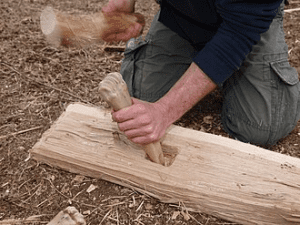
This tool isn’t just a one-trick pony. Here’s what it’s great for:
- Cutting Metal: Whether you’re slicing through sheet metal or breaking bolts, it’s your go-to.
- Chipping Concrete: Need to bust out a chunk of sidewalk or trim a slab? Grab the chisel.
- Breaking Rusty Bolts: Got a bolt so rusted it laughs at your wrench? Cold chisel to the rescue.
- Sculpting or Shaping: It’s also great for detail work in metal art, masonry, or restoration.
In short, it’s the tool you didn’t know you needed—until you really need it.
Choosing the Right Cold Chisel for Your Project
Not all cold chisels are created equal. Here’s what to look for:
- Material: Go for high-carbon, heat-treated steel. If it’s not tough, it’s trash.
- Size Matters: Bigger chisels for demolition. Slimmer ones for precision. Match the size to the job.
- Tip Shape: Flat tips for general use. Cross-cut or pointed tips for specialty tasks.
A quality chisel won’t just survive your toolbox. It’ll outlive it.
Maintenance Tips: Keep It Sharp, Keep It Strong
Video: Buying vintage chisels online: a complete guide
Even the toughest tools need love. Keep your cold chisel in fighting shape with these quick tips:
- Wipe It Down: After each use, clean off dust, oil, and debris.
- Sharpen the Edge: Use a grinder or sharpening stone when the blade starts to dull.
- Inspect Regularly: If the striking head mushrooms or cracks, it’s time for repair or replacement.
Treat it right, and this thing will be in your kit for decades.
Why the Cold Chisel Still Belongs in Every Toolbox
In a world of battery-powered everything, the cold chisel is refreshingly simple. No cords. No screens. No nonsense. It’s the kind of tool that keeps proving its worth, one clean break or perfect cut at a time.
Ask any old-school mechanic or builder—they’ll tell you. Some jobs just need a hammer, a chisel, and a little elbow grease.
Conclusion
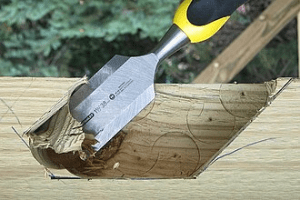
The cold chisel may look basic, but it’s anything but. It’s a timeless tool with a reputation built on function, durability, and sheer grit. Whether you’re a seasoned veteran or just starting your DIY journey, adding one to your toolbox isn’t just a nod to tradition—it’s a smart, practical move.
Because when the fancy gear fails or the job gets tough, this is the tool that never quits. It doesn’t need batteries. It doesn’t complain. It just works

